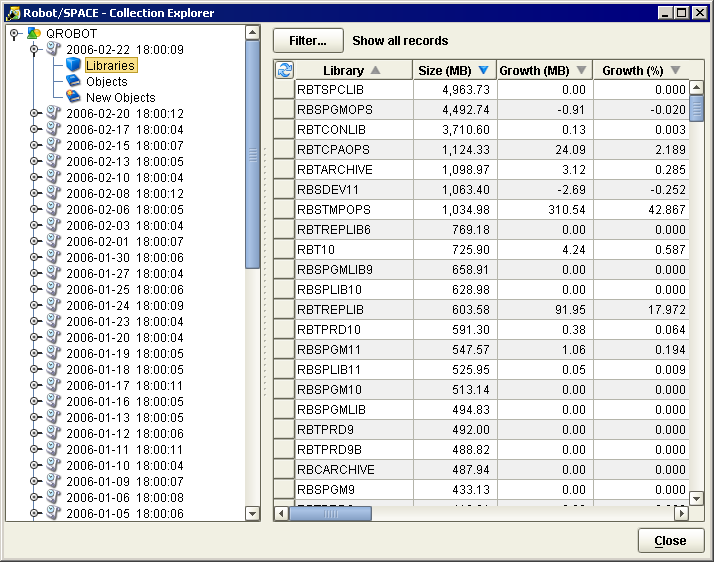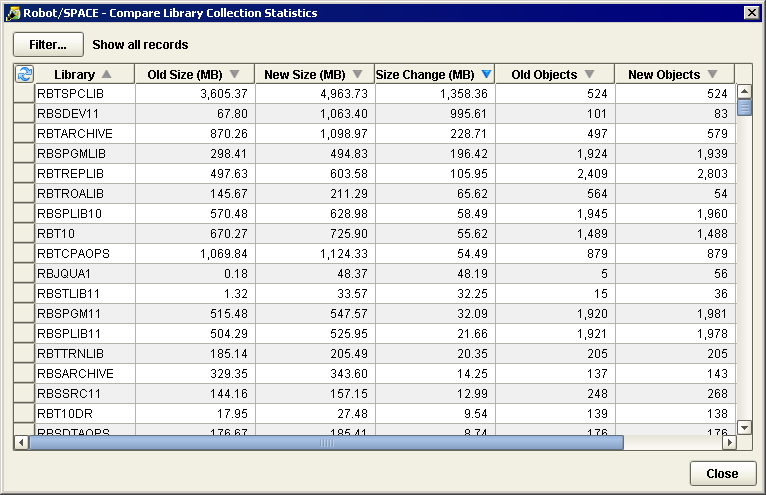We're Almost on "E"!
In an ideal world, your iSeries or System i5 would have a display—similar to a car's gas gauge—to show you how much disk space you have left. You could just walk up and check it out. In the real world, however, it's far more complicated and time-consuming, especially if you want to find out how your space is being used.
That's Sooo 1995
What's your preferred method of analyzing your disk space consumption? Some IT managers use the WRKSYSSTS command to see their used disk space and total system space, which doesn't get them very far. Others use the DSPOBJD command (which may run for several hours!) to display all system objects and then write a query or program to get their results. This provides a little more information but requires much more time.
Others resort to gathering object-size information via APIs such as QUSROBJD to retrieve object information, or to commands such as RTVOBJD to retrieve object descriptions. These APIs or commands are powerful, but who has the time to look at system objects one by one? And these APIs or commands can't help with the IFS or directories.
Welcome to the Future
Robot/SPACE, the iSeries and System i5 disk-monitoring and -management software from Help/Systems, gives you comprehensive system storage data quickly. You can set up collection groups to collect statistics for different sets of objects on your system: native iSeries objects, IFS objects, and clients connected to your iSeries with Robot/CLIENT, the client operations event manager.
You decide how often to collect statistics: You can schedule a collection to run regularly or submit it on demand. The statistics show you current object size and the fast-growing objects on your system. For example, the collection statistics for your busiest development system can show you the system's libraries, objects, IFS directories and files, output queues, and clients. You also see all newly added libraries, objects, and IFS directories and files.

Figure 1: Drill into your collections to quickly see the fastest-growing objects and any new objects. (Click images to enlarge.)
You also can compare two collections for the same group of objects to determine growth from one collection to the next.

Figure 2: Compare collections to see the amount of object growth over time.
It's About Speed and Power
A current Robot/SPACE user who is an IT manager runs a full disk collection every night on a 10 TB system. The collection runs for about two hours, which is relatively quick, considering the incredible system size. The developers who work under the IT manager are impressed by how quickly he can get library, object, and directory information.
The manager copies object size information and pastes it into Excel spreadsheets, which he gives to his developers. The developers are aware of how much space they're using, and they know their manager knows, too, so they have a little more incentive to clean up their libraries and keep a closer eye on the amount of disk space they use.
You can learn more about Robot/SPACE by clicking here. And check out Help/Systems' other offerings in the MC Showcase Buyer's Guide.
Tom Huntington is Vice President of Technical Services for Help/Systems, Inc. He can be reached at 952.563.1606 or












 Business users want new applications now. Market and regulatory pressures require faster application updates and delivery into production. Your IBM i developers may be approaching retirement, and you see no sure way to fill their positions with experienced developers. In addition, you may be caught between maintaining your existing applications and the uncertainty of moving to something new.
Business users want new applications now. Market and regulatory pressures require faster application updates and delivery into production. Your IBM i developers may be approaching retirement, and you see no sure way to fill their positions with experienced developers. In addition, you may be caught between maintaining your existing applications and the uncertainty of moving to something new. IT managers hoping to find new IBM i talent are discovering that the pool of experienced RPG programmers and operators or administrators with intimate knowledge of the operating system and the applications that run on it is small. This begs the question: How will you manage the platform that supports such a big part of your business? This guide offers strategies and software suggestions to help you plan IT staffing and resources and smooth the transition after your AS/400 talent retires. Read on to learn:
IT managers hoping to find new IBM i talent are discovering that the pool of experienced RPG programmers and operators or administrators with intimate knowledge of the operating system and the applications that run on it is small. This begs the question: How will you manage the platform that supports such a big part of your business? This guide offers strategies and software suggestions to help you plan IT staffing and resources and smooth the transition after your AS/400 talent retires. Read on to learn:
LATEST COMMENTS
MC Press Online